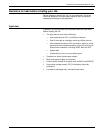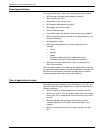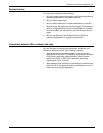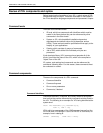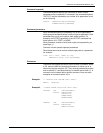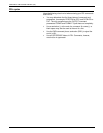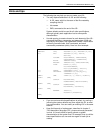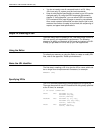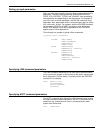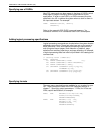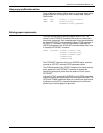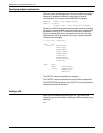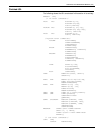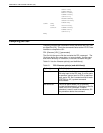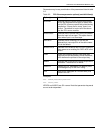
CREATING A JOB SOURCE LIBRARY (JSL)
3-10 XEROX DOCUPRINT 180 LPS PDL REFERENCE
• You do not need to use all command levels in a JSL. Many
JSLs have only ID, system, and job-level commands.
• Keep in mind that the specifications to select in your JSL can be
changed easily. By using the IDEN command (discussed in
chapter 9, “Using graphics“) you can allow DJDEs to override
PDL commands on a page-by-page or record-by-record basis.
Also, certain operator commands can alter the print job in such
areas as the number of copies to be printed, the sequencing of
reports, and paper feed specifications.
Steps in creating a JSL
There are many steps in creating a JSL, and many ways in which a
JSL can specify your application's requirements. The following
sequence is simply one example of the format and content of a JSL
to help you get ideas on how to set up your own applications.
Using the Editor
To refresh your memory on using the Editor to create or modify PDL
files, refer to the appendix, “Editor quick reference.”
Name the JDL identifier
The first step in creating a JSL is to give the JDL a name, which can
be no longer than six alphanumeric characters, for example:
XRXSPL: JDL;
Specifying VFUs
The VFU command specifies the vertical tabbing for the print job.
There can be more than one VFU identified. All are typically specified
at the ID level, for example:
/* ID level commands*/
VFU1: VFU ASSIGN=(1,11),
ASSIGN=(12,66),
TOF=11,BOF=66;
VFU2UP: VFU ASSIGN=(1,(11,77)),
ASSIGN=(12,(66,132)),
TOF=11, BOF=132;
VFU3: VFU ASSIGN=(1,1),
TOF=1, BOF=132;




